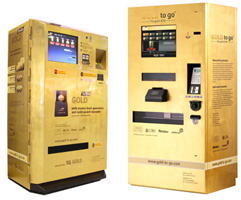If Sri Ram College of Commerce is your dream college and you are not a commerce student, 100% is what you need to make that dream come true. At the nearby Hindu College you will need 99% marks and if you settle for the south campus, Lady Sri Ram College has a first list cut-off at 97%.
"This is crazy even the second rung colleges are out of reach, even in colleges like Khalsa, the cut offs have gone upto 92-93% " a student Keshav said.
Despite the exceptionally high cut offs this year, there are some who have managed to qualify but the number of such students are not many.
"I have got 97%. They are doing it to keep the non commerce students out" a student Dheer said.
Unlike 2010, in 2011 the university decided to do away with centralised application forms and asked colleges to come out with cut offs on their own based on this years Class XII results and previous cut off trends.
The rider is that every student who makes the cut has to be given admission that is one reason the colleges are playing it safe, at least the first cut off list.
But the HRD ministry Kapil Sibbal and the Vice Chancellor of Delhi University Dinesh Singh are not happy.
"I request VC and college to take note of it and I want to tell the parents that they should not worry we will take care of this irrationality," Sibbal said.
Vice Chancellor of Delhi University said, "High cut offs because of very high percentages students have received in their boards. in the first list colleges are always cautious, cut offs will come down in second and third lists. We are looking to reform our processes."
With around 2000 students across the country securing above 95 per cent, 800 of which are from Delhi alone, the principal of SRCC Dr PC Jain says this kind of a cut off list was not unexpected.
"Performance of students has been extraordinary this year, that's why, the cut off is so high... There is nothing unfortunate. Infact, its very fortunate that students in this country are performing so well. The criteria are an old practice that has been followed so nothing like that it has been done deliberately to keep the non-commerce students out of SRCC," said Jain.
Even as the first cut off list has brought more shock than hope among students, college authorities say there is hope that the second cut off list is likely to be more realistic.
Jammu and Kashmir Chief Minister Omar Abdullah, whose two sons study in a Delhi school, is also worried over the high cut-offs. Omar tweeted saying, "Worry? I'm terrified for my sons because in five years, when Zamir (Omar's son) moves to college, the cut-offs will be even more insane."
Omar said he was happy that he finished college 20 years ago as the present cut-offs were "scary".
"With these kinds of cut-off marks, I'd have been doing a correspondence course because I wouldn't have even gotten a 'pass course' admission," he said.
Another Delhi University college Daulat Ram College has hiked its cut-off for chemistry honours by as much as 13%, while Gargi has increased the cut-off marks for chemistry honours by 12%. For English Honours, the cut-off is 88% at Gargi, Hans Raj and Ramjas.
Meanwhile, St Stephen's has done away with the Class 10 component from its eligibility requirements and is giving 85% weightage to the Class 12 marks and remaining 15% to interview.









